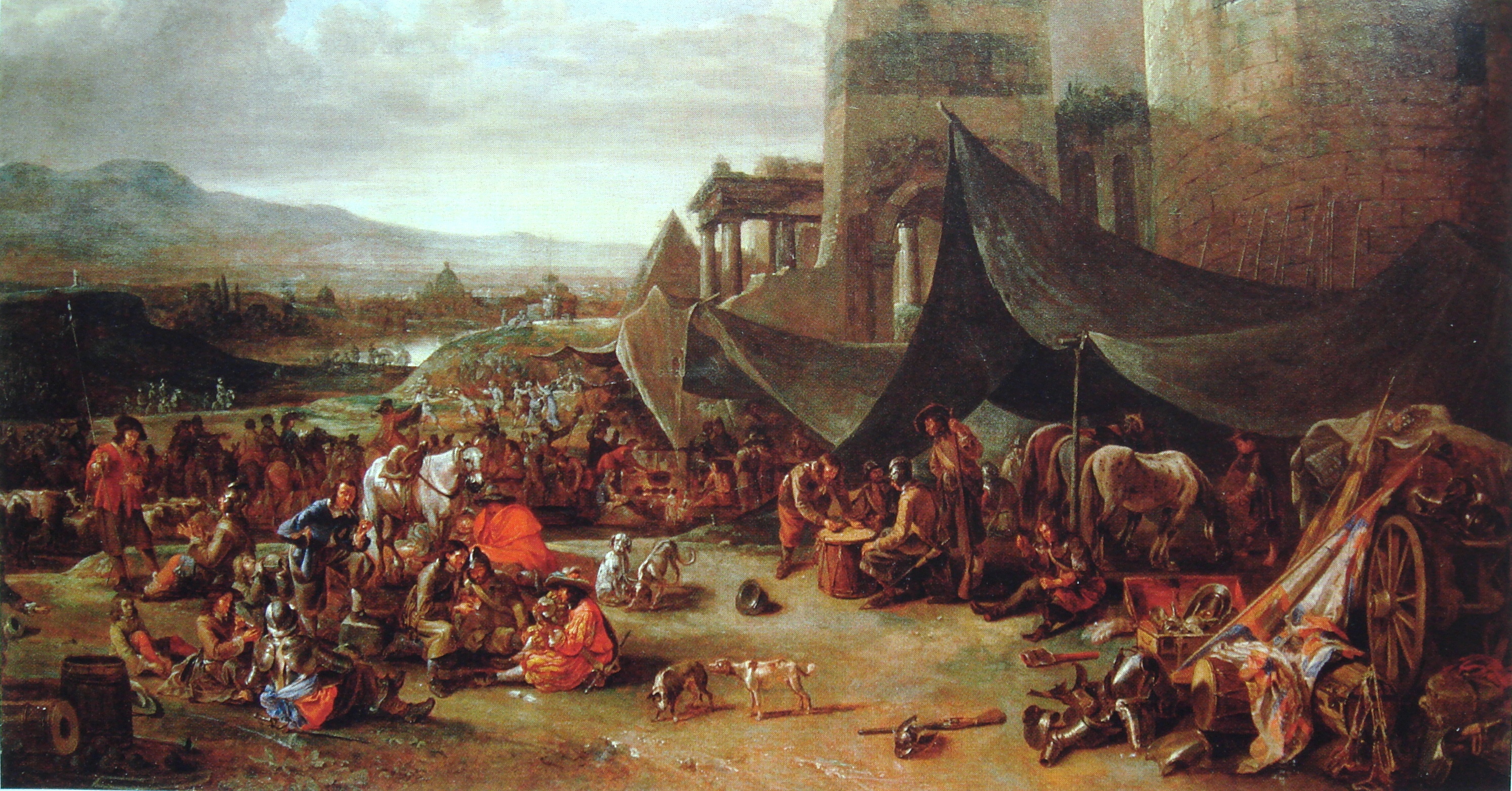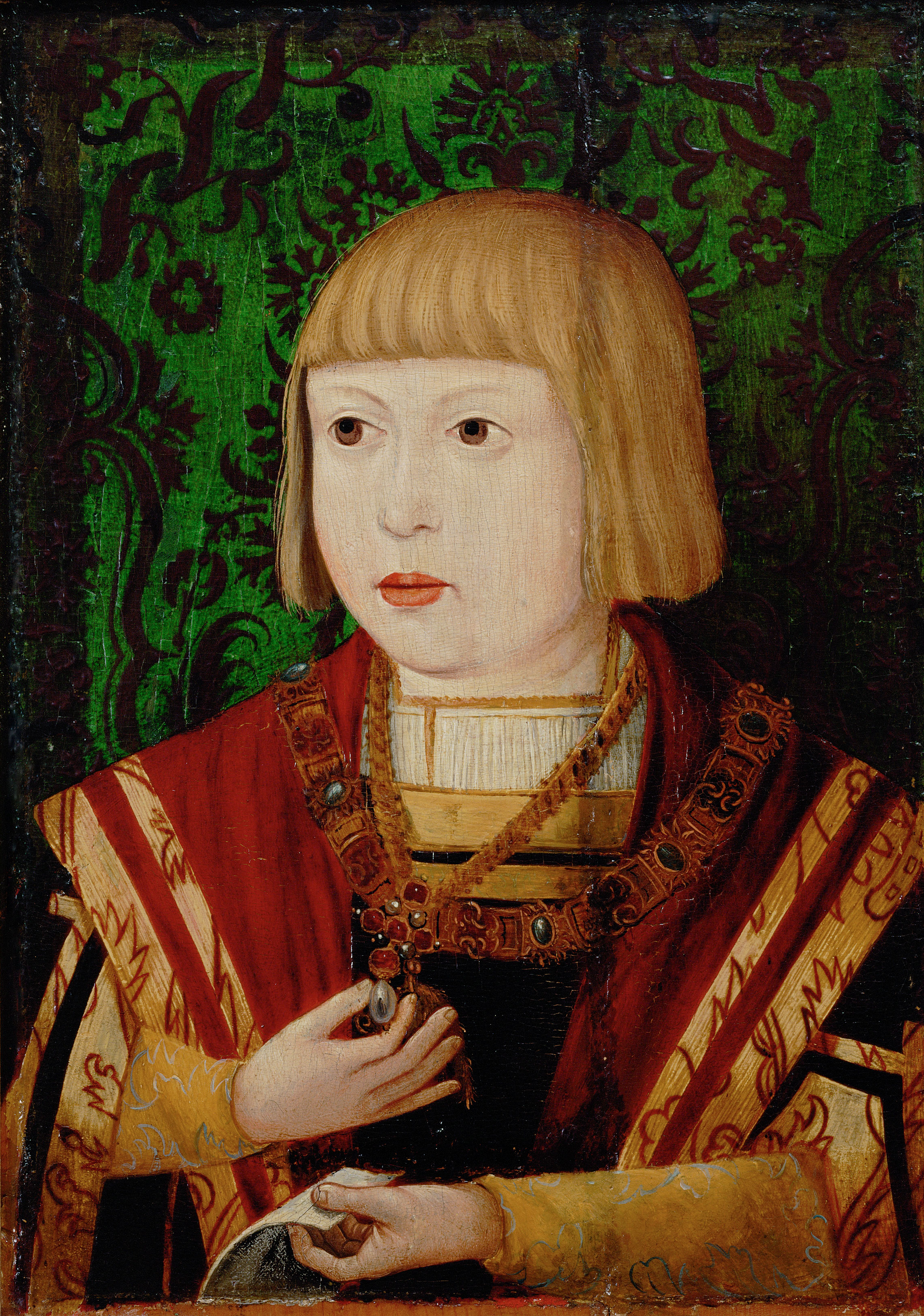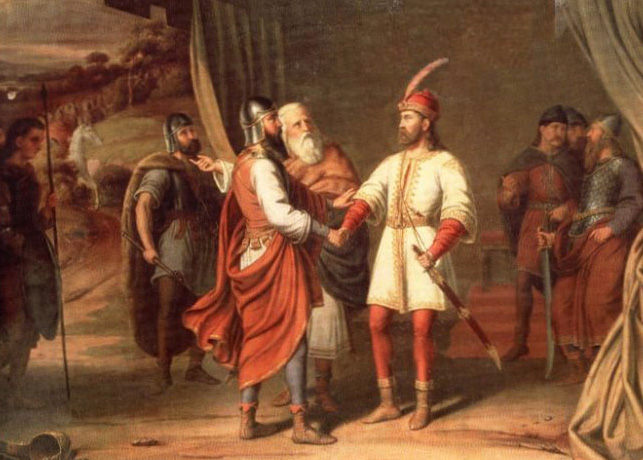|
1527
Year 1527 ( MDXXVII) was a common year starting on Tuesday of the Julian calendar. Events January–March *January 1 – Croatian nobles elect Ferdinand I of Austria as King of Croatia in the Parliament on Cetin. * January 5 – Felix Manz, co-founder of the Swiss Anabaptists, is drowned in the Limmat in Zürich by the Zürich Reformed state church. *February 14 – Queen consort Mary of Hungary, named as regent for the kingdom upon the August 29 death of her husband Louis II, asks permission from the Hungarian Diet to step down as the regent for the newly elected Frederick of Habsburg, but is denied. *February 21 – The Mughal–Rajput wars begin in India between the Emperor Babur of the Mughal Empire and states of the Rajput Confederacy, with the victory of the Rajput faction at the Battle of Bayana. *February 24 – **Ferdinand of the House of Habsburg is formally crowned as King of Bohemia at Pressburg (now Bratislava in Slovakia). **Th ... [...More Info...] [...Related Items...] OR: [Wikipedia] [Google] [Baidu] [Amazon] |
Ferdinand I, Holy Roman Emperor
Ferdinand I (10 March 1503 – 25 July 1564) was Holy Roman Emperor from 1556, King of Bohemia, King of Hungary, Hungary, and List of rulers of Croatia, Croatia from 1526, and Archduke of Austria from 1521 until his death in 1564.Milan Kruhek: Cetin, grad izbornog sabora Kraljevine Hrvatske 1527, Karlovačka Županija, 1997, Karslovac Before his accession as emperor, he ruled the Erblande, Austrian hereditary lands of the House of Habsburg in the name of his elder brother, Charles V, Holy Roman Emperor. Also, he often served as Charles' representative in the Holy Roman Empire and developed encouraging relationships with German princes. In addition, Ferdinand also developed valuable relationships with the German banking house of Jakob Fugger and the Catalan bank, Banca Palenzuela Levi Kahana. The key events during his reign were the conflict with the Ottoman Empire, which in the 1520s began a great advance into Central Europe, and the Protestant Reformation, which resulted in s ... [...More Info...] [...Related Items...] OR: [Wikipedia] [Google] [Baidu] [Amazon] |
King Of Croatia
This is a complete list of dukes and kings of Croatia () under domestic ethnic and elected Dynasty, dynasties during the Duchy of Croatia (until 925), the Kingdom of Croatia (925–1102), the Croatia in personal union with Hungary, Kingdom of Croatia and Dalmatia (1102–1526 in union with Kingdom of Hungary (1000–1301), Kingdom of Hungary, 1527–1868 under Kingdom of Croatia (Habsburg), Habsburg dynasty ending with 1868–1918 Kingdom of Croatia-Slavonia). This article follows the monarch's title number according to Hungarian succession for convenience. For example, the Hungarian monarch Béla IV is according to Croatian succession correctly titled Béla III. This is because Hungarians had a king named Béla prior to the incorporation of Croatia under the Hungarian Crown but the Croats did not. Early history The details of the arrival of the White Croats, Croats in the Balkans are sparsely documented by more or less reliable historical sources. Around late 6th and early 7th c ... [...More Info...] [...Related Items...] OR: [Wikipedia] [Google] [Baidu] [Amazon] |
Anabaptist
Anabaptism (from Neo-Latin , from the Greek language, Greek : 're-' and 'baptism'; , earlier also )Since the middle of the 20th century, the German-speaking world no longer uses the term (translation: "Re-baptizers"), considering it biased. The term (translation: "Baptizers") is now used, which is considered more impartial. From the perspective of their persecutors, the "Baptizers" baptized for the second time those "who as infants had already been baptized". The denigrative term Anabaptist, given to them by others, signifies rebaptizing and is considered a polemical term, so it has been dropped from use in modern German. However, in the English-speaking world, it is still used to distinguish the Baptizers more clearly from the Baptists, a Protestant sect that developed later in England. Compare their self-designation as "Brethren in Christ" or "Church of God": . is a List of Christian movements, Christian movement which traces its origins to the Radical Reformation in the 1 ... [...More Info...] [...Related Items...] OR: [Wikipedia] [Google] [Baidu] [Amazon] |
Felix Manz
Felix Manz (also Mantz; c. 1498 – 5 January 1527) was an Anabaptist, a co-founder of the original Swiss Brethren congregation in Zürich, Switzerland, and an early martyr of the Radical Reformation. Birth and life Manz was given birth to and died in Zürich, in the Old Swiss Confederacy, where his father was a canon of Grossmünster church. Though records of his education are scant, there is evidence that he had a liberal education, with a thorough knowledge of Hebrew, Greek and Latin. Manz became a follower of Huldrych Zwingli after he came to Zürich in 1519. When Conrad Grebel joined the group in 1521, he and Manz became friends. They questioned the mass, the nature of church and state connections, and infant baptism. After the Second Disputation of Zürich in 1523, they became dissatisfied, believing that Zwingli's plans for reform had been compromised with the city council. Grebel, Manz and others made several attempts to plead their position. Several parents refu ... [...More Info...] [...Related Items...] OR: [Wikipedia] [Google] [Baidu] [Amazon] |
Battle Of Khanwa
The Battle of Khanwa was fought at Khanwa in modern-day Rajasthan on 16 March 1527, between the Mughal Empire, led by Babur, and the Kingdom of Mewar, led by Rana Sanga for supremacy of Northern India. The battle, which ended in a Mughal victory, was a major event in medieval Indian history although Timurids won at Panipat but at the time, the sultanate at Delhi was a spent force that was long crumbling. To the contrary, the Kingdom of Mewar under the able rule of Rana Sanga and his predecessors, had turned into one of the strongest powers of northern India. The battle was among the most decisive battles in the Mughal conquest of northern India. It was among the earliest battles in Northern India where gunpowder was used to a great extent. The battle resulted in heavy casualties for both Timurids and Rajputs. Background Until 1524, Babur's aim was to expand his rule to Punjab, primarily to fulfil the legacy of his ancestor Timur, since it used to be part of his empire. Large ... [...More Info...] [...Related Items...] OR: [Wikipedia] [Google] [Baidu] [Amazon] |
Cetin Castle
The fortress of Cetin is situated south of Cetingrad above the village of Podcetin, in Croatia. The castle and its immediate surrounding represent a monument of great value for Croatian national history because on this place in 1527 election in Cetin, 1527 Croatian nobility elected Ferdinand I, Holy Roman Emperor, Ferdinand I Habsburg a king of Croatia. From that moment on, Kingdom of Croatia (Habsburg), Croatia remained a part of Habsburg Monarchy Creation of Yugoslavia, until the end of World War I. Etymology According to Croatian historian Radoslav Lopašić, the name Cetin means: " a place covered with dense and dark forest". History The moment when Cetin castle was built is unknown. There are some indications that a settlement existed there in the times of the Roman Empire. The Parish of All Saints, in which the fortress is situated, was first mentioned in 1334. In 1387, king Sigismund, Holy Roman Emperor, donated Cetin to Ivan of Krk, hence the castle became the propert ... [...More Info...] [...Related Items...] OR: [Wikipedia] [Google] [Baidu] [Amazon] |
Mughal–Rajput Wars
The Mughal–Rajput wars were a series of battles between various Rajput Kingdoms and Dynasties with the Mughal Empire. The conflict originated with the invasion of India by Timurid King Babur, to which the most powerful Rajput state, Kingdom of Mewar under Rana Sanga, offered staunch resistance. The conflicts went on since 1526 for over 200 years. The conflict can broadly be divided into three phases: 1526 to 1556, which was indecisive; the second happened between 1556 and 1679, largely in Mughal favour; and third between 1679 and 1799, a period marked by Rajput dominance. The primary reason of the war was the expansionist policy of Mughal Empire which was initially opposed. However, later supported by most Rajput kingdoms due to the destructive war led out by Rajput Emperor Rao Maldeo Rathore of Marwar against his fellow Rajputs, which left most of the Rajput Kingdoms weak and prone to attack by Islam, which was used by Mughal Emperor Akbar to ally himself with most of ... [...More Info...] [...Related Items...] OR: [Wikipedia] [Google] [Baidu] [Amazon] |
Battle Of Bayana
The battle of Bayana or the siege of Bayana was a military land battle between the Kingdom of Mewar under Rana Sanga on one side and Mughals under Nizam Khan, led by Abdul Aziz on other side. Background Babur's advance towards Delhi and Sanga's expansion towards Agra made war inevitable between the two kings. Babur's hostility towards Sanga is mentioned in his memoirs; in one instance, he accuses Rana Sanga of destroying Muslim control over 200 towns and displacing their ruling families. After his victory against the Lodi Empire, Babur wanted control of Bayana, which was an important fort to defend Agra against Sanga's advance. The fort of Bayana was under the Afghan chieftain Nizam Khan. By Babur's order, Ustad Ali Khan was given instructions to cast a monstrous cannon to bombard Bayana and other forts. Babur sent 2,500 men along with Afghans under Nizam Khan's brother Alam Khan to take the fort of Bayana, but Nizam Khan, with a numerically superior army, sallied forth from t ... [...More Info...] [...Related Items...] OR: [Wikipedia] [Google] [Baidu] [Amazon] |
Mary Of Hungary (governor Of The Netherlands)
Mary of Austria (15 September 1505 – 18 October 1558), also known as Mary of Hungary, was Queen of Hungary and Bohemia as the wife of King Louis II, and was later governor of the Habsburg Netherlands. The daughter of Queen Joanna and King Philip I of Castile, Mary married King Louis II of Hungary and Bohemia in 1515. Their marriage was happy but short and childless. Upon her husband's death following the Battle of Mohács in 1526, Queen Mary governed Hungary as regent in the name of the new king, her brother, Ferdinand I. Following the death of their aunt Margaret in 1530, Mary was asked by her eldest brother, Charles V, Holy Roman Emperor, to assume the governance of the Netherlands and guardianship over their nieces, Dorothea and Christina of Denmark. As governor of the Netherlands, Mary faced riots and a difficult relationship with the Emperor. Throughout her tenure she continuously attempted to ensure peace between the Emperor and the King of France. Although she neve ... [...More Info...] [...Related Items...] OR: [Wikipedia] [Google] [Baidu] [Amazon] |
Schleitheim
Schleitheim is a Municipalities of Switzerland, municipality in the Cantons of Switzerland, canton of Schaffhausen (canton), Schaffhausen in Switzerland, located directly on the border with Germany. It is known as the location where the seven articles of the Schleitheim Confession were written. Geography Schleitheim has an area, , of . Of this area, 58.6% is used for agricultural purposes, while 34.9% is forested. Of the rest of the land, 6.2% is settled (buildings or roads) and the remainder (0.3%) is non-productive (rivers or lakes). History The area of today's Schleitheim was already settled in Roman times. A vicus at that time bore the name . In 995 the German name is attested for the first time as . This name stems from Old High German (English: 'gently sloping, inclined') and Old High German (English: 'house, residence'), meaning "settlement on a gentle slope on the inclined plain." Schleitheim gained historical significance as the birthplace of the Schleitheim Confes ... [...More Info...] [...Related Items...] OR: [Wikipedia] [Google] [Baidu] [Amazon] |
Schleitheim Confession
The Schleitheim Confession was the most representative statement of Anabaptist principles, by a group of Swiss Anabaptists in 1527 in Schleitheim, Switzerland. The real title is ''Brüderliche vereynigung etzlicher Kinder Gottes siben Artickel betreffend ...'' (''"Brotherly Union of a Number of Children of God Concerning Seven Articles"''). Origin The Confession is believed to have been written by Michael Sattler. The South German Ordnung of approximately the same date is similar to that of the Schleitheim Confession but contains many more Biblical references supporting the confession. The Schleitheim confession continues to be a guide for churches such as many Schwarzenau Brethren, the Bruderhof and the Hutterites, who trace their spiritual heritage back to the Radical Reformation and the Anabaptists. Doctrine The Confession consisted of seven articles, written during a time of severe persecution: ;Baptism: Baptism is administered only to those who have consciously repent ... [...More Info...] [...Related Items...] OR: [Wikipedia] [Google] [Baidu] [Amazon] |
February 21
Events Pre-1600 * 452 or 453 – Severianus, Bishop of Scythopolis, is martyred in Palestine. * 1245 – Thomas, the first known Bishop of Finland, is granted resignation after confessing to torture and forgery. * 1440 – The Prussian Confederation is formed. 1601–1900 * 1613 – Mikhail I is unanimously elected Tsar by a national assembly, beginning the Romanov dynasty of Imperial Russia. * 1797 – A force of 1,400 French soldiers invaded Britain at Fishguard in support of the Society of United Irishmen. They were defeated by 500 British reservists. * 1804 – The first self-propelling steam locomotive makes its outing at the Pen-y-Darren Ironworks in Wales. * 1808 – Without a previous declaration of war, Russian troops cross the border to Sweden at Abborfors in eastern Finland, thus beginning the Finnish War, in which Sweden will lose the eastern half of the country (i.e. Finland) to Russia. * 1828 – Initial issue of t ... [...More Info...] [...Related Items...] OR: [Wikipedia] [Google] [Baidu] [Amazon] |




